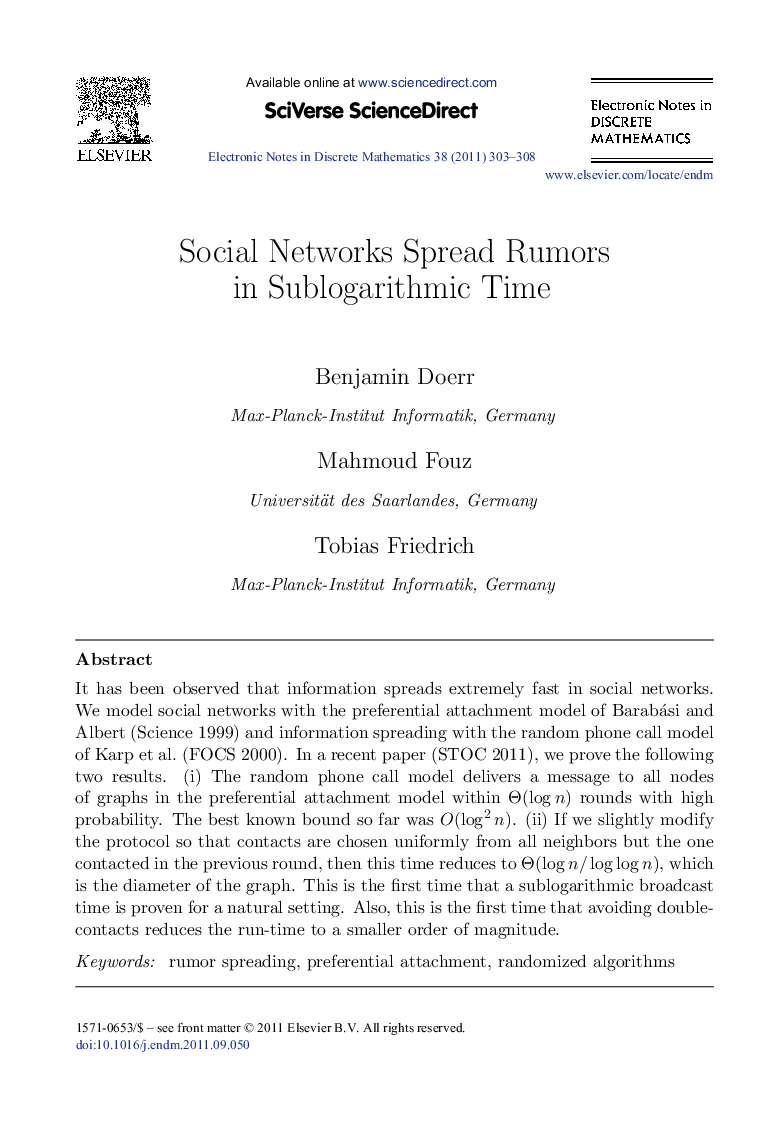| Article ID | Journal | Published Year | Pages | File Type |
|---|---|---|---|---|
| 6423885 | Electronic Notes in Discrete Mathematics | 2011 | 6 Pages |
Abstract
It has been observed that information spreads extremely fast in social networks. We model social networks with the preferential attachment model of Barabási and Albert (Science 1999) and information spreading with the random phone call model of Karp et al. (FOCS 2000). In a recent paper (STOC 2011), we prove the following two results. (i) The random phone call model delivers a message to all nodes of graphs in the preferential attachment model within Î(logn) rounds with high probability. The best known bound so far was O(log2n). (ii) If we slightly modify the protocol so that contacts are chosen uniformly from all neighbors but the one Î(logn/loglogn), which is the diameter of the graph. This is the first time that a sublogarithmic broadcast time is proven for a natural setting. Also, this is the first time that avoiding doublecontacts reduces the run-time to a smaller order of magnitude.
Related Topics
Physical Sciences and Engineering
Mathematics
Discrete Mathematics and Combinatorics
Authors
Benjamin Doerr, Mahmoud Fouz, Tobias Friedrich,
